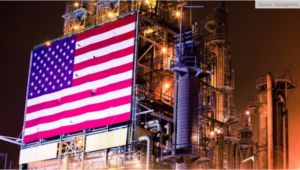I de seneste uger er oliepriserne steget, og de har nået det højeste niveau i 13 måneder. Prisen på Brent oil er brudt gennem 60 dollar. Den økonomiske genopretning vil føre til øget aktivitet og efterspørgsel, og oliepriserne kan nå op på 70-72 dollar i år, vurderer ABN Amro, der dog tror, at der kun er tale om en midlertidig stigning. Over de næste to år vurderer banken, at prisen vil falde til mellem 50 og 60 dollar, fordi OPEC-landene vil sætte produktionen i vejret. Rusland vil ikke have en for høj pris, for det gavner den amerikanske shale-produktion, og det skader dermed Ruslands interesser.
Uddrag fra ABN Amro:
Oil market optimism continues
- Market optimism triggers higher oil prices; technically, a rally to USD 70/barrel is possible
- OPEC+ will feel pressure to increase their oil production faster
- ABN AMRO revises up oil price forecasts, but USD 50-60/barrel trading range remains our base scenario
Market optimism continues to support oil prices
In recent weeks, oil prices have continued to rise, reaching their highest level in 13 months. This week Brent oil prices broke through the technical resistance level of USD 60/barrel within the upward trend channel.
As a result, the multiyear downward trend was broken. Investors are optimistic about the outlook for the economy. This is because of the large government stimulus packages and central bank’s monetary policy easing. In line with this, stock markets have risen and the perception is that demand for oil should also increase again.
Based on the technical outlook, oil prices could rally to USD 70-72/barrel, which are the peaks of September 2019 and January 2020. However, based on fundamental analysis, the case for a further price gains is hard to make, although we are seeing optimism in financial markets in general.
OPEC+ may face new discussions again
At the beginning of February, OPEC+’s technical committee indicated that the oil market was in balance to such an extent that no adjustments were needed to the agreed production level. As a reminder, OPEC+ will reduce its production from the benchmark by 7.125 million barrels per day (mb/d) in February and 7.05 mb/d in March.
In addition, Saudi Arabia has pledged a voluntary production cut for these months of 1 mb/d, making its net production cut currently more than 8 mb/d. This latter decision already provided supportive for the oil price in January.
But within OPEC+ not everyone is reading from the same page. Russia has already indicated that, as far as it is concerned, an oil price of USD 45-50/barrel is sufficient to meet its financial obligations. A higher oil price would only play into the hands of US shale oil producers and that is what the leaders in Moscow want to avoid at all cost.
The current (WTI) oil price is far too high in their view. The leaders in Saudi Arabia, on the other hand, have an oil price of USD 60/barrel on average in their sights. Their latest uncoordinated action – cutting oil production unilaterally – has helped the oil price to rise further. The fact that the OPEC+ oil producers are sticking strictly to their agreements, so there is a high level of compliance, also contributes to the positive sentiment.
The call within OPEC+ to increase oil production could therefore grow rapidly. This is partly to protect their market share and to protect it from the Americans, but also to be able to meet their own financial needs. After all, many of the OPEC+ countries are in financial dire straits and some extra oil production – certainly at the current price – could bring some relief.
Now the OPEC+ energy ministers have already agreed on oil production levels for February and March. But on 3 and 4 March they will meet again to agree upon production levels for April and beyond. It would not come as a surprise to us if the first ‘verbal interventions’ and hints towards future production levels are already slowly being leaked to the market. This is to slow down a further price rise and already set the tone for the new negotiations.
The time seems ripe for a more rapid phasing out of production cuts. And it is possible that the energy ministers will have second thoughts, and even before March, the production level will be slightly adjusted. However, Iraqi oil minister Ihsan Abdul Jabbar has already indicated that he does not see the need to adjust production soon. However, Saudi Arabia will in all likelihood reverse the voluntary 1 mb/d production cut after March.
With another 7 mb/d of spare production capacity within reach, it is difficult to see how a recovery in oil demand should lead to even higher oil prices. And if the price rise does continue, oil production in the US will also start to recover sooner and later. This creates a cap on top of oil prices. Obviously, positive investor sentiment and other external factors could cause the price to temporarily move even higher.
However, we think these are temporary drivers. In addition, there is the likelihood that OPEC+ will intervene if the oil price rally lasts too long, or goes too far. Indeed, the two oil giants in the form of Russia and Saudi Arabia have set limits on oil prices. The former prefers oil prices to be close to USD 45-50/barrel while the latter prefers oil prices to trade around USD 60/barrel.
Therefore we expect the average oil price for the next two years to trade between USD 50-60/barrel. There is, of course, a small probability that they will not come to an agreement, as we saw in the early 2020s. Also, the other OPEC+ members may start to fight against the Russia/Saudi Arabia power block. If countries then choose for their own interests and the oil tap is opened faster and more, more oil would then come to the market and prices would decline rapidly.
Oil price forecasts revised up
As a result of continued market optimism, we have revised our oil prices slightly up. In particular, the price correction lower which we expected in Q2 and Q3 will be less deep. We continue to expect a trading range in which the average Brent oil prices trade roughly between USD 50 and USD 60/barrel. Nevertheless, market speculation may temporarily push oil prices higher. Based on the supply/demand balance, we think that such much higher oil prices are not sustainable and that oil producers will then start to increase production. With so much spare production capacity available, there will be no shortages in the coming years. There is also a risk that the expected recovery in demand for oil will be disappointing. The biggest recovery of demand will have to come from the aviation sector. Especially for aviation, we do not yet see a major recovery this year.
If investors start to feel that the upward movement is coming to an end, profit-taking on the extensive long positions could trigger a severe downward price correction. We therefore believe that the risks to the oil price are mainly on the downside.
We have also adjusted the oil price somewhat for 2022 and 2023. Again, we still see the USD 50-60 range. However, the price could rise slightly as a result of the expected economic recovery once the lockdowns ease.

















